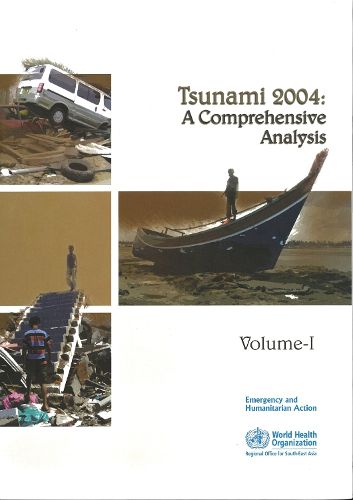Readings Newsletter
Become a Readings Member to make your shopping experience even easier.
Sign in or sign up for free!
You’re not far away from qualifying for FREE standard shipping within Australia
You’ve qualified for FREE standard shipping within Australia
The cart is loading…






One of the lessons learnt from emergencies or disasters in the South-East Asia Region is that information and knowledge management is a weak area. The Indian Ocean tsunami of 26 December 2004 was no exceptionIn any emergency, no matter how difficult, information needs to be collected, stored, and retrieved systematically for analysis. This should be done before, during and after any event. By having a disciplined structure and practice around these activities, we can be more effective in turning information into knowledge and knowledge into action. This was one of the goals of this book; the other was to take up the challenge of documenting a mega-event. This way one can review what happened on 26 December 2004 by correlating diverse information from various sources and how this impacted health. This book, in two volumes, serves as a reference textbook for the event itself as it happened in each country of study and provides a method for documenting emergencies in the larger discipline of emergency risk management in health. Populations will always live with risks and managing them better can only come with well-informed, evidence-based action, especially those that have a bearing on health. The book contributes to this practice - the information is relevant for future events and contributes to better public health practice in emergencies.
$9.00 standard shipping within Australia
FREE standard shipping within Australia for orders over $100.00
Express & International shipping calculated at checkout
Stock availability can be subject to change without notice. We recommend calling the shop or contacting our online team to check availability of low stock items. Please see our Shopping Online page for more details.
One of the lessons learnt from emergencies or disasters in the South-East Asia Region is that information and knowledge management is a weak area. The Indian Ocean tsunami of 26 December 2004 was no exceptionIn any emergency, no matter how difficult, information needs to be collected, stored, and retrieved systematically for analysis. This should be done before, during and after any event. By having a disciplined structure and practice around these activities, we can be more effective in turning information into knowledge and knowledge into action. This was one of the goals of this book; the other was to take up the challenge of documenting a mega-event. This way one can review what happened on 26 December 2004 by correlating diverse information from various sources and how this impacted health. This book, in two volumes, serves as a reference textbook for the event itself as it happened in each country of study and provides a method for documenting emergencies in the larger discipline of emergency risk management in health. Populations will always live with risks and managing them better can only come with well-informed, evidence-based action, especially those that have a bearing on health. The book contributes to this practice - the information is relevant for future events and contributes to better public health practice in emergencies.